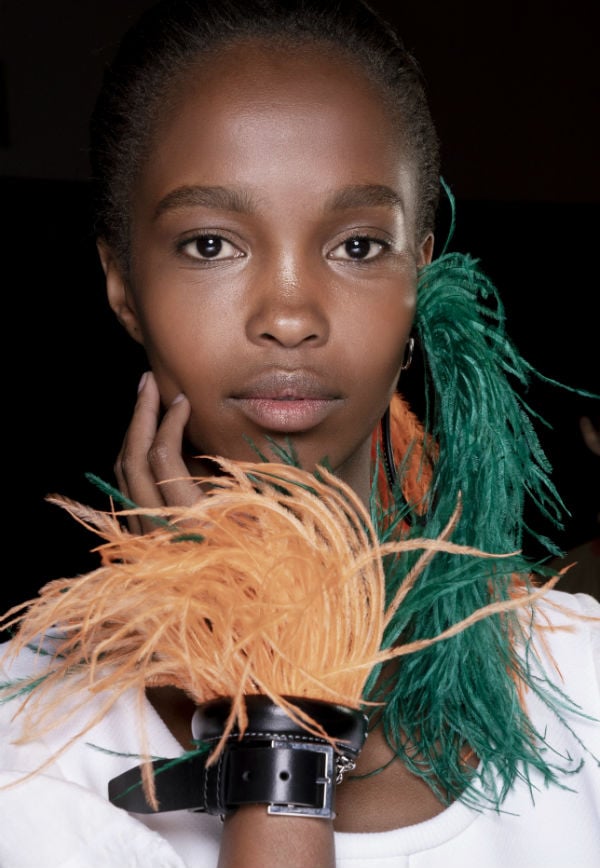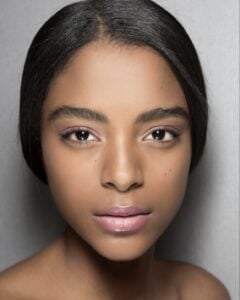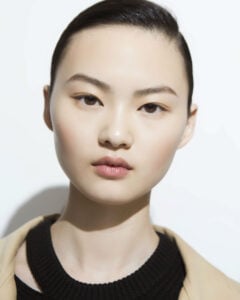Ultimately, we use skincare and beauty products as an extension of our health and wellness: we cleanse to remove dirt, moisturize to restore nourishment, exfoliate to regenerate skin cells, apply serums to treat aging concerns. For decades, we’ve trusted that the products we use to do these things are contributing to our overall well being. But in the age of information, we’re learning more and more that our trust was misplaced.
Skincare and beauty brands have packed our products with irritating, allergy-inducing, and even toxic ingredients that are harmful to both humans and our environment. As consumer demand for healthy products moves from our dinner plates into all other aspects of our lives, this knowledge is becoming more mainstream. Consumers are increasingly demanding transparency from skincare and beauty brands in terms of not only their ingredients but also their sourcing and manufacturing processes.
The term ‘clean beauty’ comes from this shift in consumer demand. We talked to three experts to help us unpack the latest beauty buzzword and its future in skincare. Founder and CEO of luxury organic skincare brand True Botanicals, Hillary Peterson, dermatologist and founder of science-based natural skincare line Goldfaden MD, Dr. Gary Goldfaden, and founder and curator of healthy beauty subscription Beauty Heroes, Jeannie Jarnot, tell us about what clean beauty is today, what more needs to be done in terms of research and regulation, and what we can expect the movement to look like in the foreseeable future.
WHAT IS CLEAN BEAUTY TODAY?
Dr. Goldfaden explained that a big part of clean beauty is avoiding harsh, toxic chemicals, colors, and fragrances. This is a central tenant of the clean beauty movement because “our skin is the largest organ of our body and studies have found that the skin can absorb up to about 60% of what we put on to it.” Clean beauty favors “natural makeup, skincare products, and body products [that] work with your skin instead of against it”, because not only do natural and organic ingredients work better with our body, but they also don’t pose the same risk to our health as harsh chemical ingredients.
For many of the leading brands, clean beauty encompasses more than just the ingredients. Peterson expands the definition of clean beauty beyond the ingredients they use. For her, clean beauty is “beauty that is safe for both people and the planet.” In this definition, clean beauty refers to being ethical and transparent at all levels of the supply chain – from sourcing to packaging – and taking into consideration the impact a product has on human health, communities, and the environment.
In reality, nailing down a single definition for clean beauty is difficult because, as Jarnot puts it: “clean means something different to everyone.” As a result, “if you are seeking clean products, you should define what clean means to you, and then find a retailer who aligns with your definition of clean.”
THE FUTURE OF CLEAN BEAUTY RESEARCH
Thanks to extensive research into their toxicity, there’s no question about the safety (or lack thereof) of certain chemical ingredients commonly used in skincare. Dr. Goldfaden says the biggest toxic offenders are “mineral oil, silicones, petrochemicals, artificial dyes, artificial fragrances, chemicals, and fillers.” Peterson has a similar list, “I often share with friends and customers our list called the Toxic 10—if you’re looking to clean up your personal care routine, then start by getting rid of all of these ingredients. Pay particular attention to synthetic fragrance—it’s full of endocrine-disrupting chemicals like phthalates.”
Although we know that as many as one in eight of the 82,000 ingredients used in skincare are industrial chemicals with the potential for toxicity, there’s still plenty of research being done and to be done. “Research is always ongoing, and a new study, or a review of studies, can call into question an ingredient’s safety at any time” Peterson explains. That’s why she says it’s important to know about trusted third-party organizations that “work with the best green chemists in the world who care deeply about the health of people and the planet.” While we way may think a particular ingredient is safe right now, future research might show differently.
More than that, there should be ways to filter that research down to the consumer. Jarnot tells us that we need a consumer-friendly and easy-to-access platform that relays scientific data on ingredients to the customer. “We can already see this coming, but nothing out there has really mastered this, yet. Once it is really easy to see the science behind an ingredient, in a digestible format, that information will drive the awareness, demand, and development of truly clean formulations.”
Jarnot also thinks that technology will play a role in helping us identify and process the best ingredients for both human health and the environment. She sees a future in which “biotechnology will help brands source healthy, botanical ingredients more sustainably. As the clean/green beauty movement grows, ingredients are in higher demand and the demand may lead to them being sourced less sustainably. I think we will continue to see a lot of technological advances in how we efficiently farm and harvest botanical ingredients, possibly leading to higher quality products.”
THE FUTURE OF REGULATING CLEAN BEAUTY
Clean beauty is the newest beauty buzzword. “I think when you walk into any drugstore and the big brands are all offering their own versions of ‘clean beauty’, you know it’s heading into the direction of being the ‘norm’” says Dr. Goldfaden. And while that may sound like a positive thing, there’s also a big problem: regulation.
Because the term isn’t at all regulated, it can be used by any brand looking to capitalize on the increasing consumer demand for such products. Peterson clarified the danger in that lack of regulation for us: “As more and more consumers connect the dots between ingredients and their own health, the demand for truly clean beauty will only grow. However, with that, we will also see brands work harder to market products that are some version of clean, but not all the way there – also known as clean (or green) washing.” Jarnot expanded on that concept: “The good is that retailers are starting to recognize that clean is important… Unfortunately, that doesn’t really tell you much, as some retailers ‘clean’ standard can still include ingredients that contain carcinogens, hormone disruptors, ingredients that are not cruelty-free or non-GMO and more.”
In an environment where there’s no official regulations or standards for ingredients, third-party certification is extremely important when purchasing your personal care products. For Peterson, “credible third-party certification will be critical in order to assure that people are getting what they hope that they are getting.” The role of third-party certifiers is to evaluate products for safety without any bias or favor toward the brand, “and that’s ultimately better for the consumer.” Buying products that are certified by the best in the biz ensures you’re getting a product that works without compromising your health or values.
THE FUTURE OF THE CLEAN BEAUTY MOVEMENT
For our experts, clean beauty is a trend that’s here to stay. Peterson said that, for her, “once you learn about how beauty products impact our health and the health of the planet, you can’t unlearn it. It drives consumer demand for clean formulas. It inspires entrepreneurs like me.”
But, beyond clean ingredients, there’s room for the clean beauty movement to grow and expand into other, related, territory: “I think that we are moving away from just looking at what is in the bottle. We’re considering all the ways in which a product in its full life cycle—from farm to bottle to box and beyond—impacts the health of our communities and our planet.”
Jarnot also sees a future of clean beauty that’s more than just safe ingredients: “We are actually looking for brands that are making a net-positive impact on our environment, going a step beyond clean… We should expect companies to make products that are not only ‘not bad for you and the environment’ but are actually good for us and the environment. That feels truly clean to me.”
This future means ingredients that are good for you and good for the water supply and food chain. It means a skincare industry that sources ingredients respectfully. It means protecting and empowering the communities and farmers in the supply chain. It means packaging products in environmentally-friendly ways that don’t harm the ocean or the land. It means recycling, sustainability, and an ethos of development.
Clean beauty isn’t going anywhere as long as we continue to demand better of what goes into and onto our bodies. Like Jarnot told us, “we, as global citizens, need to look at our patterns of consumption and make sure we are reigning it in as well as purchase products that are lighter on the planet in packaging and carbon footprint. This is starting to happen, and it will continue, but it definitely hasn’t hit the mainstream beauty movement yet.”



